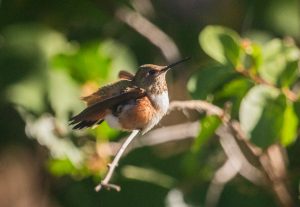How well do you know your community? When you first hear that question, you think of the location of shopping and where your friends and family live. What if I were to tell you that you were missing the big (and small) picture? The things that are usually beneath our notice like earthworms and big things like mountain lions create the immense network of life that truly makes up the community in which we live. September 7 was California Biodiversity Day with the entire week of September 7 – 15 being California Biodiversity Week. Our world, especially California, forms a vast interconnected ecosystem that stocks grocery stores, feeds our towns and cities and gives us a healthy place to live.
On the small end of this network, the earthworm and all the assorted creepies and crawlies that attack or protect your tomatoes are actually on the big end of things. We, along with the mountain lions, are enormous on the scale of things. Small things like molds and bacteria you can’t even see are the small end. It was to protect the neighbors I can’t see that I began to practice no dig gardening and stopped using the chemicals that are so prevalent in farming and gardening today. These molds and bacteria form a mycorrhizal network that works with almost all green plants to allow the roots to absorb water. We are just discovering this complexity and while it is too late for some things—like the passenger pigeon—it is up to you and me to be aware enough to save the rest and ourselves along with it. Without mycorrhizae, even with adequate water, plants would die and us along with them.
On the large end, we have chased out mountain lions allowing deer to migrate into our hunter-safe neighborhoods where their large population is proving to be a traffic hazard and a hotbed of disease for the deer. We are not even going to talk about buffalo, bears and wolves. Yes, they can be scary, but so are we. In truth I am not at all sure that we, humanity as a whole, make good neighbors.
The living safety net of life exists on a number of levels—species, genetic and ecosystem diversity. All of these need our concern and study. Here in California, we have tremendous diversity with rainforests, deserts, wetlands, Central Valley savannahs, mountains and coastal forests. The loss of even one ecosystem can cause devastating consequences (such as the drained swampy wetlands of Louisiana that can no longer protect New Orleans). We simply have no clue what the removal of just one ecosystem will do.
In the past 100 years biodiversity has decreased dramatically. Thousands of species are on the edge of extinction. Our need for better transportation, our overuse of many resources, our world-connecting transportation systems create climate change and open up new pathways for disease. Biodiversity is not just a byword; it is a life-giving network that we must care for if we as a species are going to prosper.
Setting out an extra tomato plant just for tomato hornworms, planting milkweed for monarch butterflies or practicing no dig gardening for the health of the soil may seem like a small thing, but if we all do our part, we can change the world and reknit the fraying safety net we call biodiversity.
Jim Bliss is a University of California Cooperative Extension Master Gardener of Tuolumne County.

